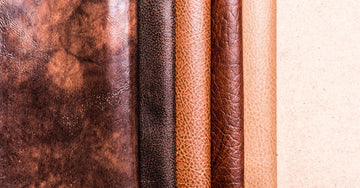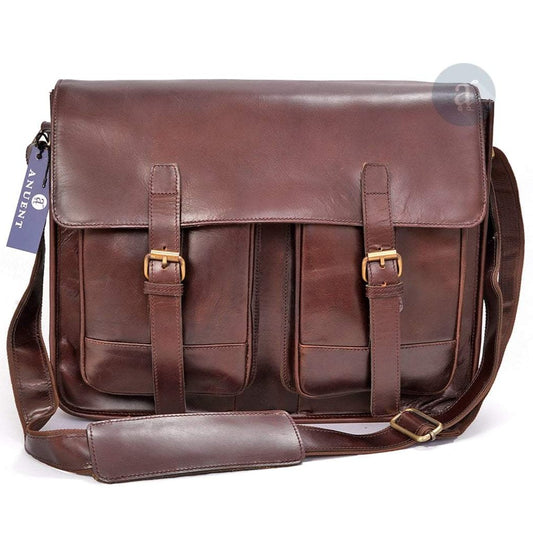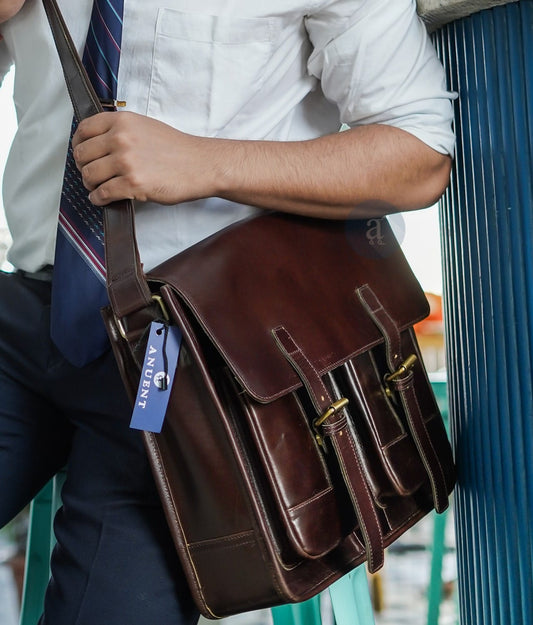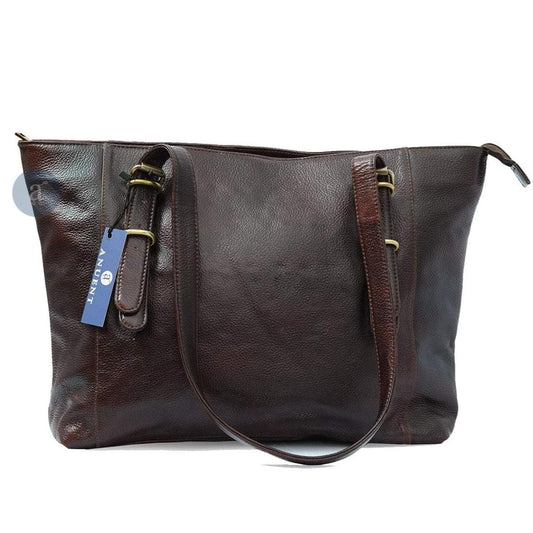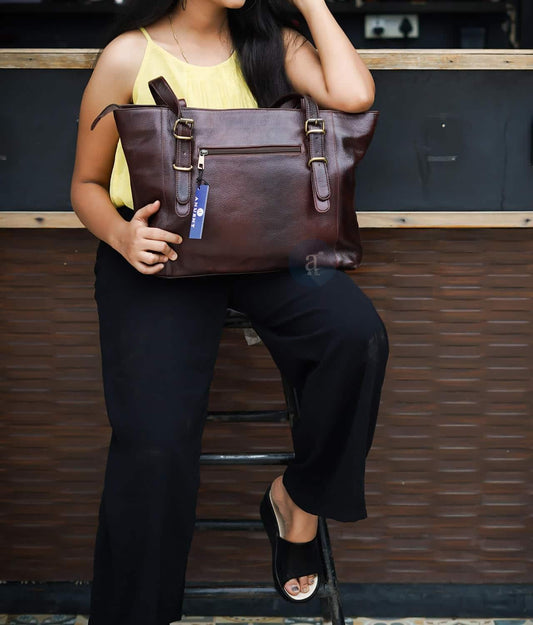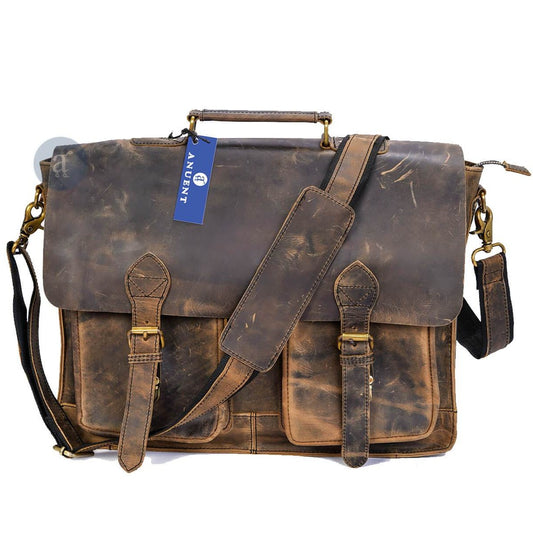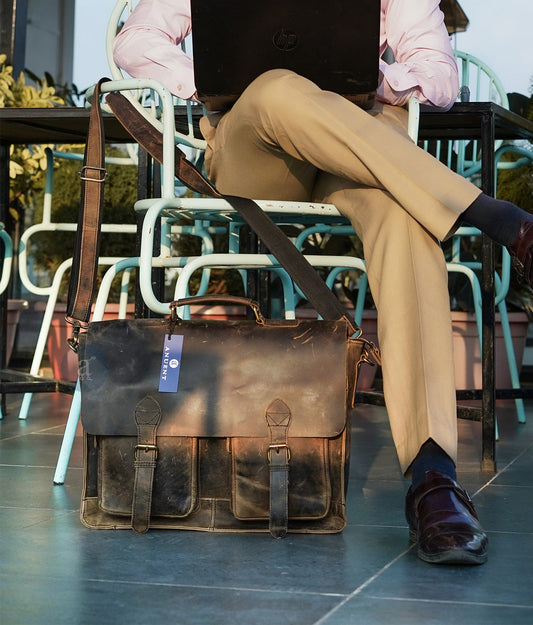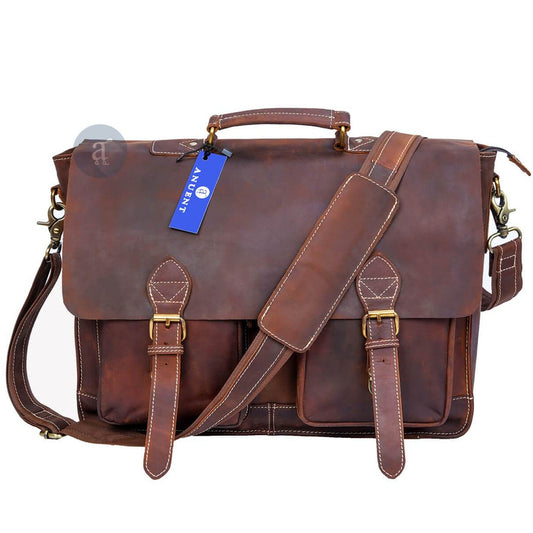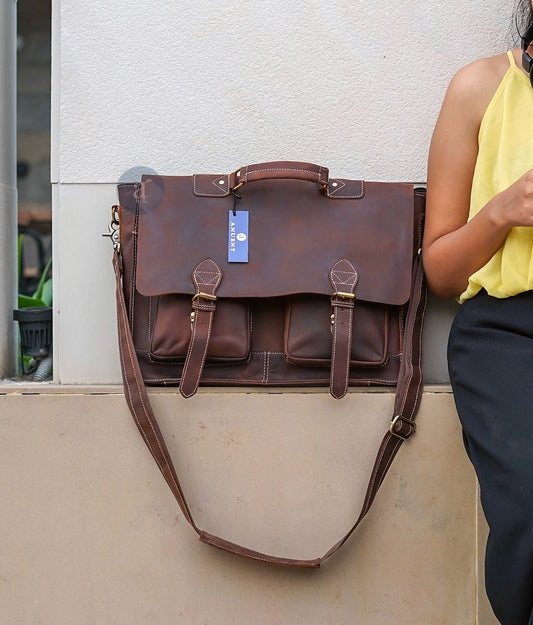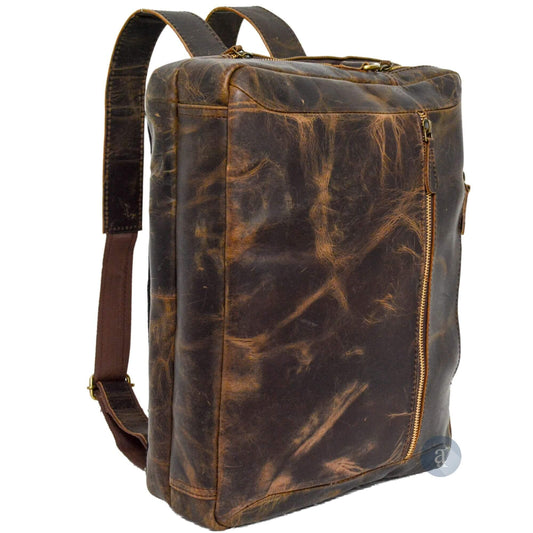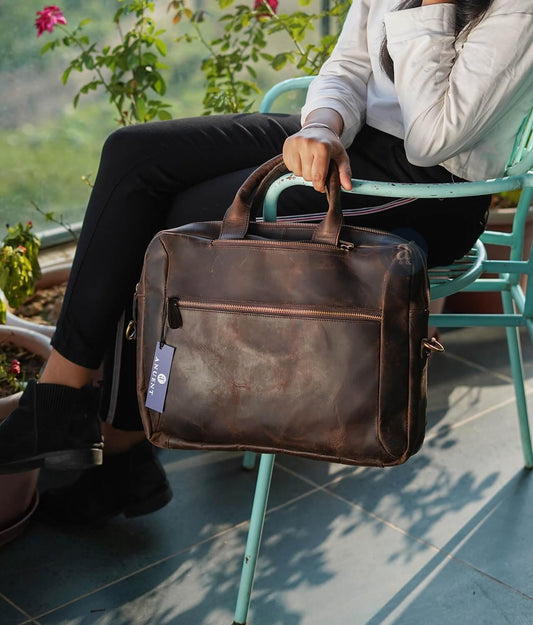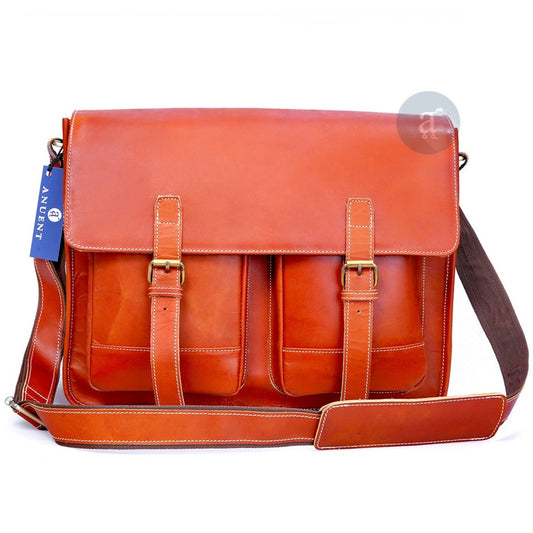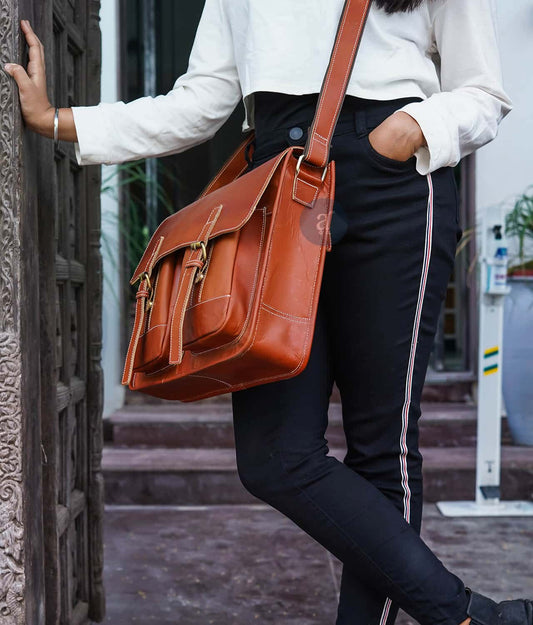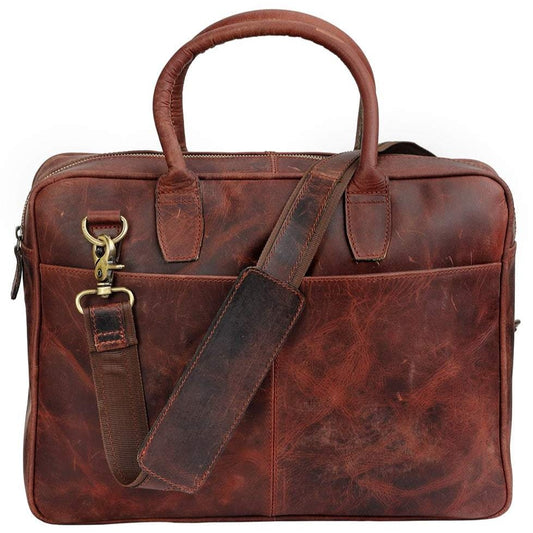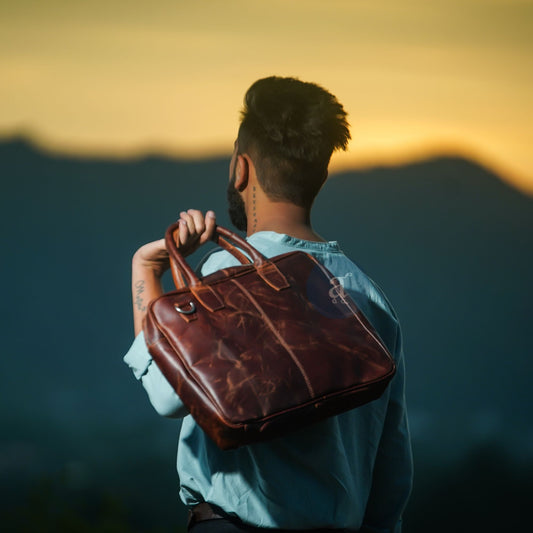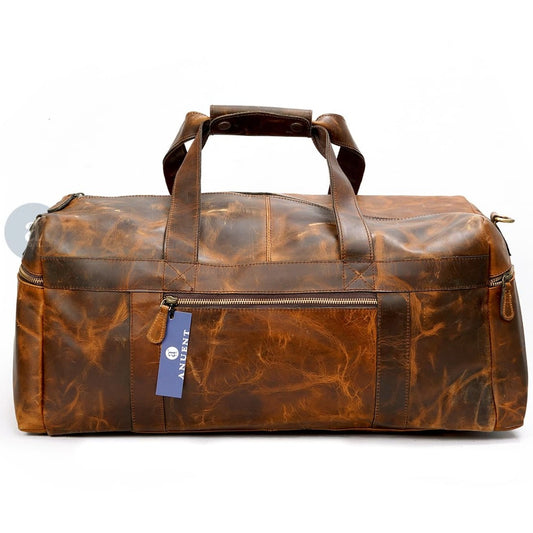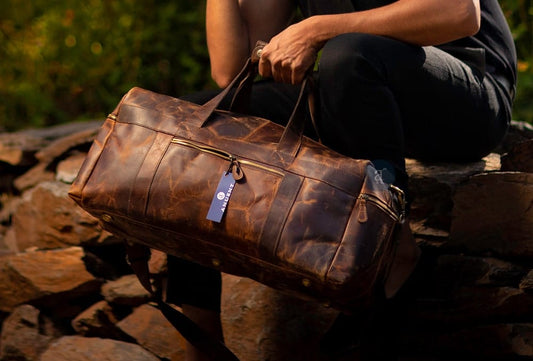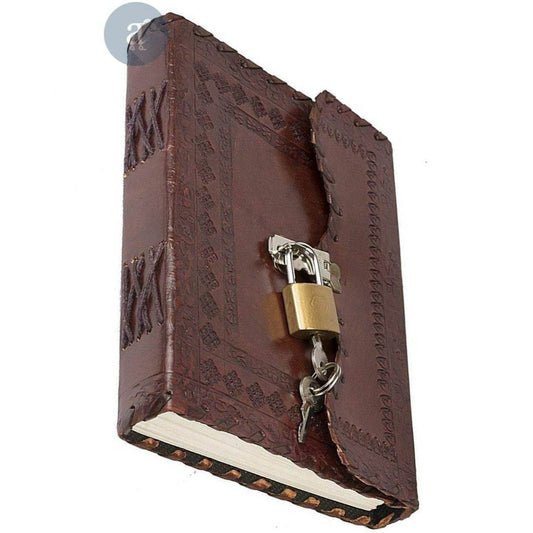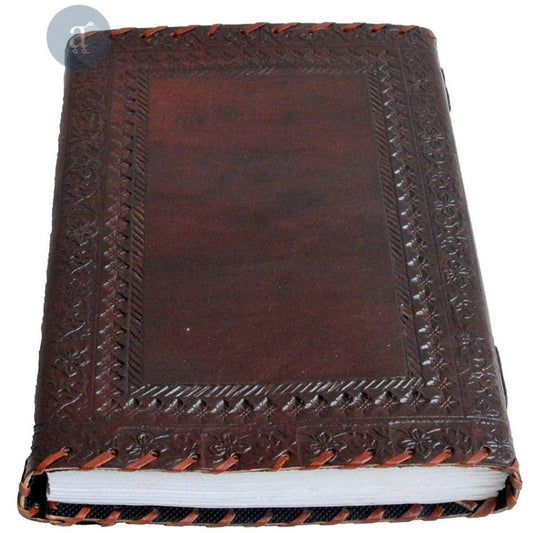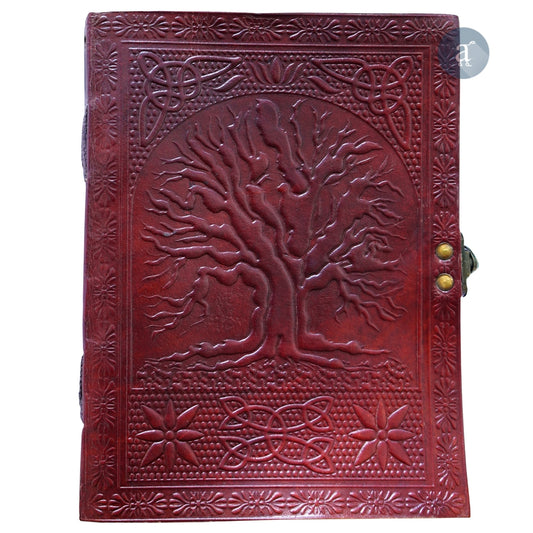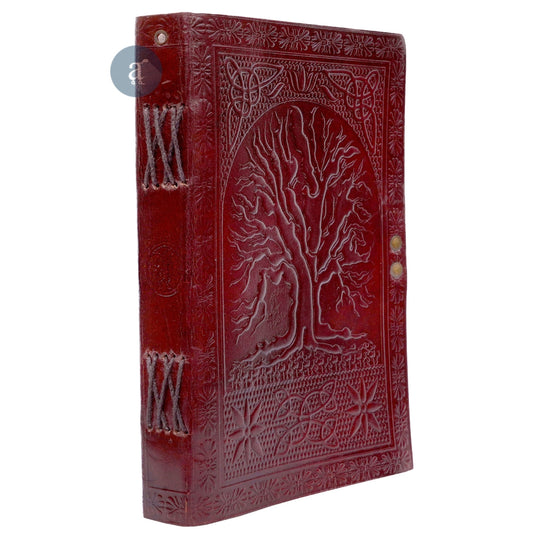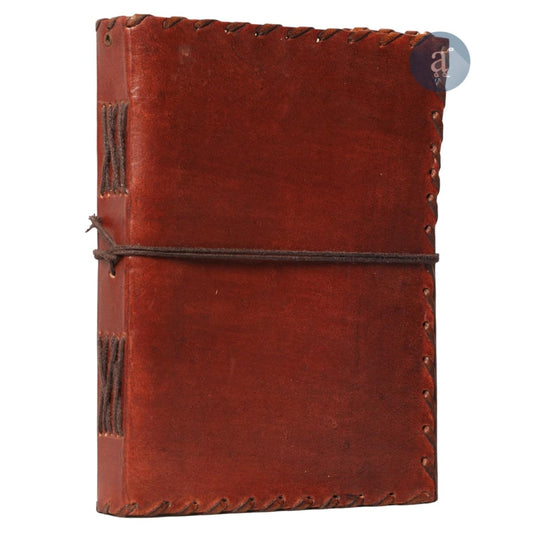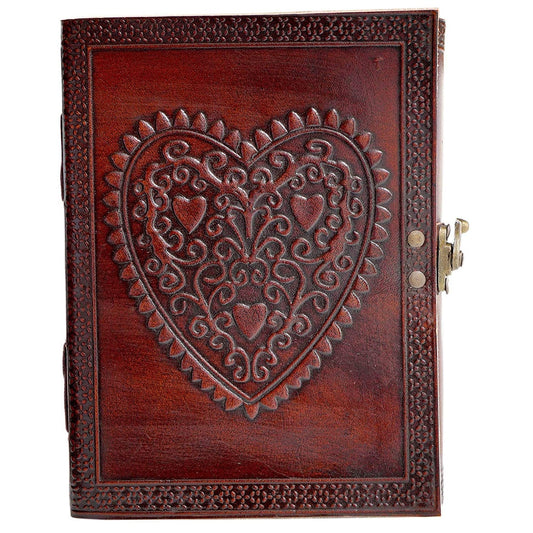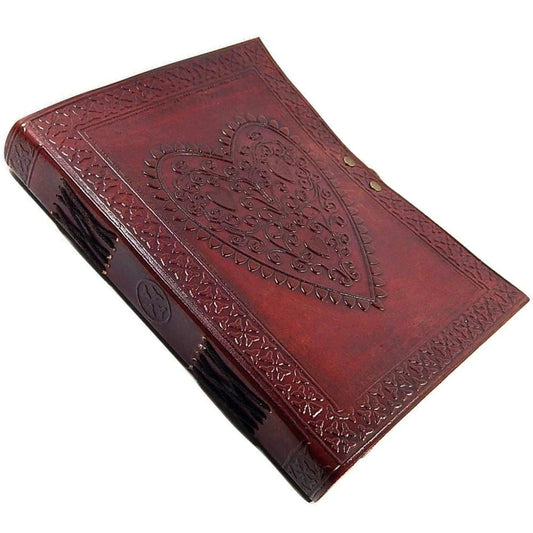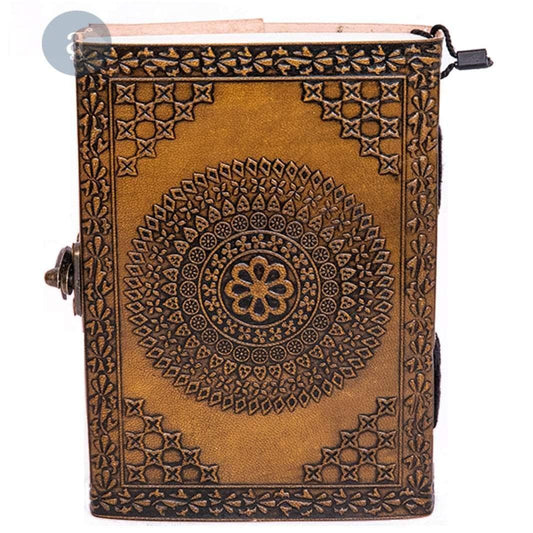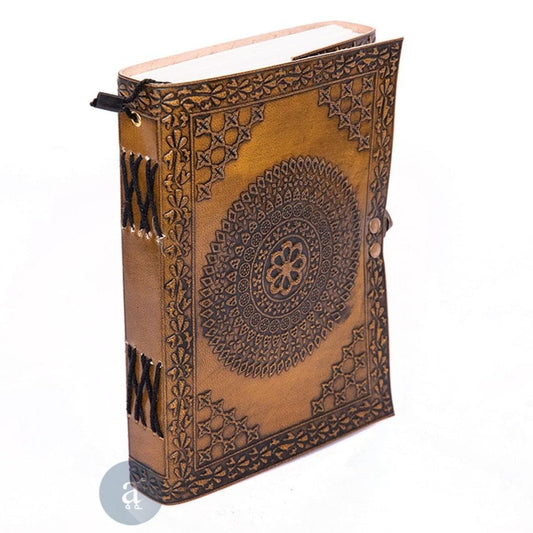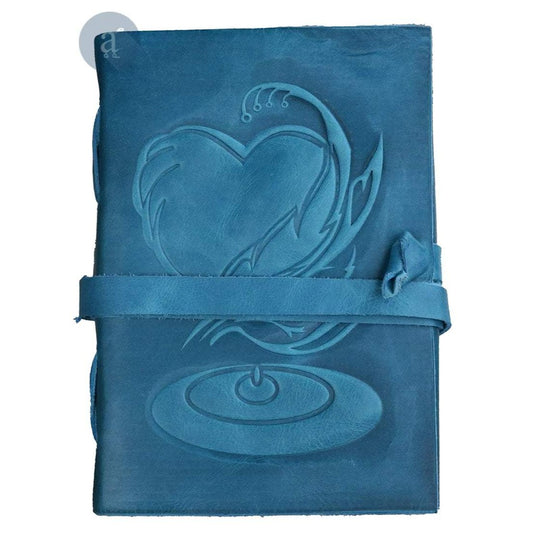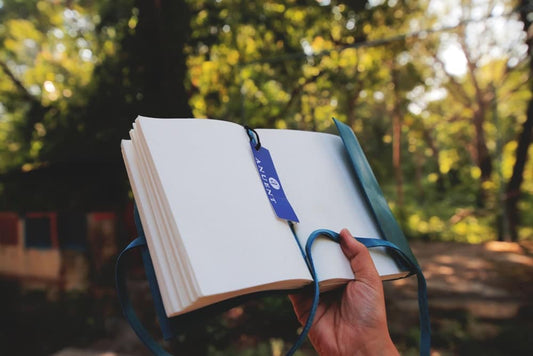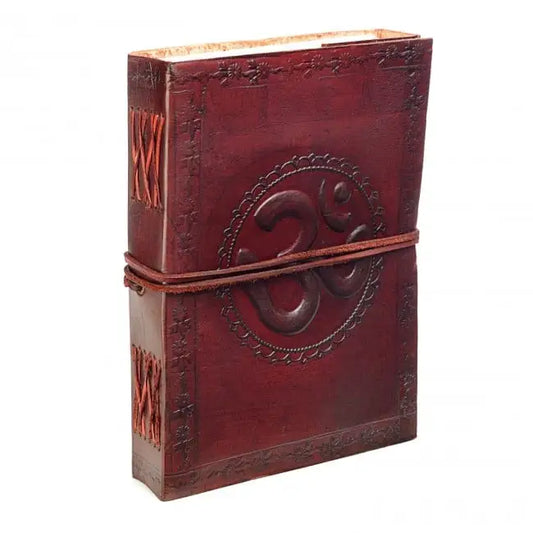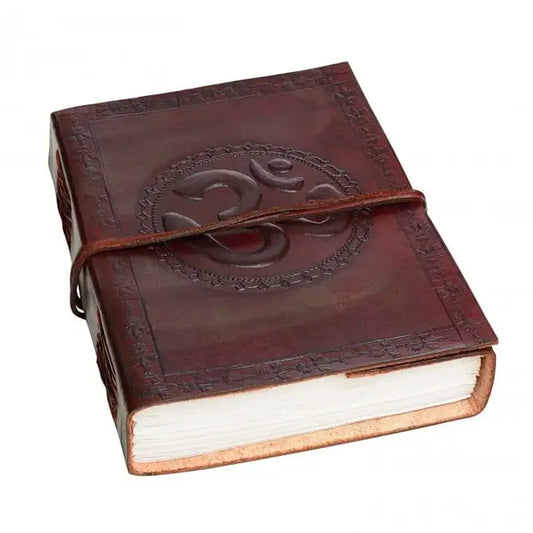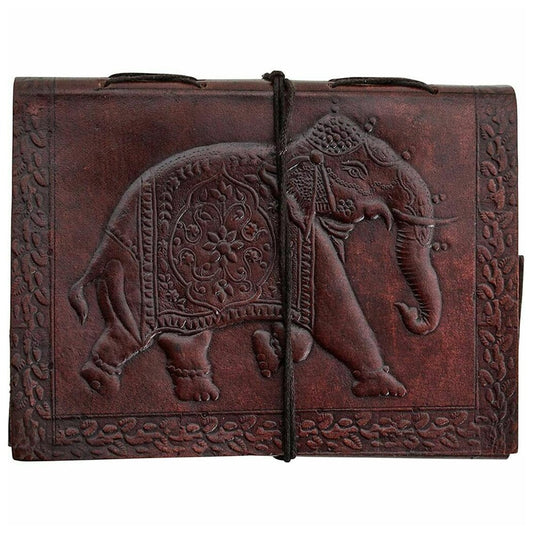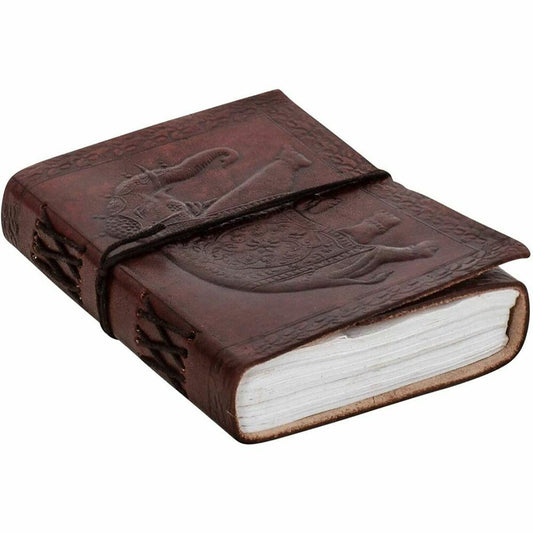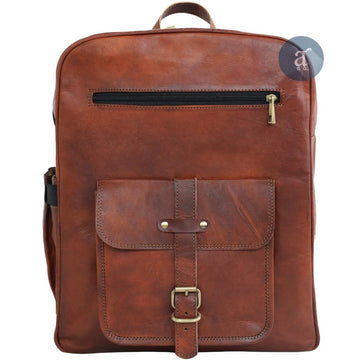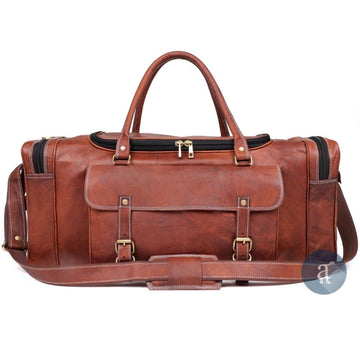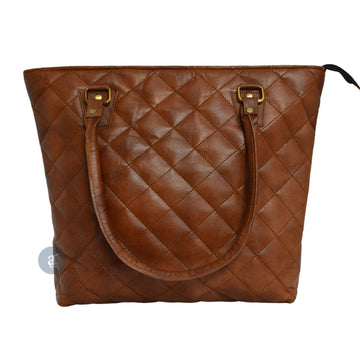Let’s talk leather.
It’s one of those materials that’s been around forever—think ancient sandals to today’s sleek wallets—and it’s still a big deal.
Whether you’re eyeing a new jacket or wondering why your couch feels so luxe, knowing your leather types can save you money and headaches.
This guide on types of leather breaks down everything from where leather comes from to how to keep it looking sharp, all in a way that won’t bore you to tears.
Quick Takeaways
- Leather’s not one-size-fits-all: Quality, look, and use depend on the animal, grade, and finish.
- Grades are key: Full-grain is the gold standard, followed by top-grain, genuine, split, and bonded, each with its own vibe and durability.
- Tanning changes everything: Vegetable or chrome tanning gives leather its unique feel.
- Animal matters: Cowhide’s tough, lambskin’s soft, and exotic leathers like alligator scream luxury.
- Finishes tweak performance: Aniline’s natural, pigmented’s tough, and patent’s glossy.
- Spotting real leather: Smell it, touch it, or try a water test to tell genuine from fake.
- Care’s non-negotiable: Different leathers need different TLC to last.
Why Bother Learning About Leather Types?
Leather’s more than just a material—it’s a craft, a story, and sometimes a status symbol.
I remember splurging on a leather bag years ago, only to realize I had no clue how to care for it.
Spoiler: it didn’t end well.
Knowing your leather helps you pick quality over flash, keep your stuff looking great, and appreciate the work behind it.
Plus, with so many options out there, you don’t want to get duped by “genuine leather” that’s barely better than plastic.
Leather Grades: What’s the Deal with Quality?
Leather quality boils down to which part of the hide you’re using and how it’s treated.
Hides get split into layers—the top “grain” side’s tight and tough, while the lower “split” side’s looser and weaker.
The denser the fibers, the stronger the leather. Here’s the breakdown.
Full-Grain Leather
This is the crème de la crème. Full-grain comes from the hide’s top layer, keeping all its natural marks—scars, wrinkles, even bug bites.
No sanding or buffing here, just raw, real leather.
It’s super strong, breathes well, and ages like fine wine, picking up a gorgeous patina (that worn-in glow you see on old leather jackets).
I’ve got a full-grain wallet that’s been through hell and still looks better than day one.
It’s pricey, though, so expect to shell out for top-notch bags, shoes, or furniture.
Top-Grain Leather
One step down, top-grain’s still solid.
It’s from the same top layer but gets lightly sanded to smooth out flaws, making it more uniform.
It’s thinner and bendier than full-grain, with decent durability and a subtle patina over time.
You’ll see it in nice handbags, jackets, or couches.
It’s a bit cheaper, striking a sweet spot between quality and cost.
Corrected-grain, a type of top-grain, starts with rougher hides that get extra sanding for a polished look.
Genuine Leather (Don’t Be Fooled)
“Genuine leather” sounds legit, right?
Nope.
It’s often the bottom of the barrel, made from lower hide layers or scraps glued together with plastic.
It’s technically real leather, but it’s flimsy, doesn’t age well, and feels cheap.
You’ll find it in budget belts or bag linings.
If you want something that lasts, steer clear unless you’re on a tight budget.
Split-Grain Leather
This comes from the hide’s lower layers after splitting off the top.
It’s weaker, with looser fibers, but has its uses:
- Suede: Soft, fuzzy, and oh-so-touchable, suede’s made from the inner split layer. It’s great for stylish shoes or jackets, but it stains if you look at it funny. I once spilled coffee on a suede jacket—lesson learned: always use a protective spray.
- Nubuck: Similar to suede but from the outer grain side, lightly sanded for a velvety feel. It’s tougher and pricier, used in fancy shoes or bags. Still, watch out for water.
Bonded Leather
Calling this “leather” is a stretch.
It’s basically ground-up leather scraps mixed with plastic and slapped onto a backing.
It’s cheap, looks fake, and falls apart fast—think peeling couch cushions.
Avoid it for anything you want to keep long-term.
Leather Types by Animal: What’s the Source?
The animal behind the leather shapes its texture, strength, and vibe.
Each type’s got its own personality, perfect for specific uses.
Everyday Animal Leathers
These are the workhorses of the leather world, balancing cost and versatility:
-
Cowhide: The MVP, cowhide’s tough and widely available. It’s got a classic grain, works with any finish, and ages beautifully. You’ll see it in everything from boots to car seats. My old cowhide belt’s still kicking after a decade.
- Calfskin: From younger cows, it’s softer with a finer grain. Perfect for sleek wallets or dress shoes.
- Sheepskin: Super soft and lightweight, sheepskin’s great for cozy gloves or jackets. It’s naturally oily, so it resists water a bit and stays flexible. Lambskin, from younger sheep, is even plusher—think buttery gloves.
-
Goatskin: Tough yet soft, with a cool pebbled texture. It’s stretchy and water-resistant, ideal for gloves, bags, or shoes.
Fun fact: some ancient leather artifacts are goatskin. - Pigskin: Budget-friendly with a dotted grain (from hair follicles). It’s durable and often used for linings or cheap gloves.
Exotic Leathers
Want to stand out? Exotic leathers bring unique textures and serious bragging rights:
- Alligator/Crocodile: Tough, with iconic scales (croc’s are tidier, alligator’s wilder). They’re water-resistant and scream luxury in wallets or bags. Pricey, but worth it for the wow factor.
- Ostrich: Soft yet strong, with quirky quill bumps. It’s a favorite for bold accessories. Bonus: many suppliers source it sustainably.
- Snake/Lizard: Lightweight with striking scales. Snake’s flowy for clothing; lizard’s tight-grained for watch straps or shoes.
- Stingray: Beaded like tiny pearls, it’s crazy tough and scratch-proof. Used for unique wallets or shoes, but it’s stiff and costly.
- Kangaroo: Light but abrasion-resistant, perfect for soccer cleats or motorcycle gear thanks to its stretch.
Leather Finishes: How Treatment Changes the Game
Finishes are like the final polish on leather, tweaking its look, feel, and toughness.
They’re applied after tanning and can make or break a product’s performance.
Aniline, Semi-Aniline, and Pigmented
These are the big three, balancing natural beauty with protection:
- Aniline: Barely treated, dyed with clear dyes to show off the hide’s natural marks. It’s soft, breathable, and patina-prone but stains easily. Think luxe furniture or high-end bags. A water drop soaks right in—handle with care.
- Semi-Aniline: A middle ground, with a light pigment coat for some stain resistance. It’s still natural-looking but tougher, great for busy households or car interiors. Water sits briefly before sinking in.
- Pigmented: Coated with thick, opaque color for max durability. It’s uniform, stain-proof, and somewhat plastic-like, often used in cars or budget furniture. Water beads up on top.
Specialty Finishes
These add extra flair or function:
- Nubuck: Grain-side sanded for a velvety touch. Tougher than suede but still delicate—used in premium shoes or bags.
- Nappa: Ultra-soft and smooth, often from young animals. It’s water-resistant and hypoallergenic, perfect for car seats or jackets.
- Patent: Glossy and waterproof, thanks to a plastic-like coating. Easy to clean but scuffs over time—think dress shoes or belts.
- Saffiano: Crosshatched and waxed for scratch resistance. It’s a go-to for sturdy handbags or wallets.
- Latigo: Double-tanned (chrome then veggie) for softness and strength. Water-resistant and patina-friendly, used in boots or saddles.
- Shell Cordovan: Rare horse leather from the rump’s “shell.” Glossy, crease-free, and insanely durable—think bespoke shoes. It’s a splurge.
- Bridle: Veggie-tanned cowhide stuffed with oils and wax. Sturdy with a waxy “bloom,” it’s ideal for saddles or belts.
Faux Leather: The Synthetic Scoop
Faux leather’s the vegan cousin, made to mimic real leather without animals.
It’s usually polyurethane (PU) or polyvinyl chloride (PVC) coated onto fabric. PU’s softer; PVC’s stiffer.
It’s cheap, uniform, and water-resistant but less breathable and prone to cracking.
Ethically, it skips animal use, but environmentally, it’s tricky—plastic-based and non-biodegradable.
New plant-based options are greener, though.
How Leather’s Made: From Hide to Hero
Turning a raw hide into leather is no small feat.
It’s a mix of old-school craft and modern tech, starting with the meat industry byproducts (mostly cow, sheep, or goat hides).
Prep Work (Beamhouse)
- Soaking: Hides get a bath to rehydrate and clean off salt or dirt.
- Liming: A lime solution removes hair and preps fibers for tanning.
- Deliming/Bating: Enzymes soften the hide, making it pliable.
- Fleshing/Splitting: Scraping off flesh and splitting into grain and split layers.
Tanning
This locks in the hide’s structure, making it rot-proof:
- Vegetable Tanning: Slow (weeks to months), using plant tannins. Stiff, patina-heavy, and earthy—great for belts or saddles.
- Chrome Tanning: Fast (a day), using chromium salts. Soft, colorful, and stretchy—used in most apparel or bags.
- Aldehyde Tanning: Chrome-free for baby shoes or car interiors.
- Brain Tanning: Traditional, super-soft, for specialty items like buckskin.
- Alum Tawing: Temporary, not true tanning—used for niche crafts.
Finishing Touches
- Wringing/Drying: Removes water.
- Shaving: Even thickness.
- Dyeing: Adds color.
- Fatliquoring: Oils keep it soft.
- Finishing: Buffing, coating, or embossing for the final look.
Caring for Different Leather Types
Proper care and maintenance are essential for preserving the beauty and extending the lifespan of leather products.
Different types of leather require specific care routines due to their unique properties.
A. General Cleaning Tips
-
Regular Dusting: Use a soft, dry cloth to regularly dust leather items, preventing dirt buildup that can scratch the surface.
-
Wipe Spills Immediately: For most leathers (especially protected ones), gently blot spills with a clean, dry cloth immediately. Avoid rubbing, which can spread the stain.
-
Avoid Harsh Chemicals: Never use harsh household cleaners, abrasive detergents, or strong solvents on leather, as they can strip natural oils, dry out the leather, or cause discoloration and damage.
-
Test in an Inconspicuous Area: Before applying any cleaning or conditioning product to the entire item, always test it on a small, hidden spot to ensure it doesn't cause discoloration or damage.
-
Use Leather-Specific Products: Invest in high-quality cleaners and conditioners formulated specifically for leather.
B. Specific Care for Different Grades and Finishes
-
Full-Grain Leather: This type benefits from regular conditioning to maintain its suppleness and encourage patina development. Clean gently with a damp cloth and mild leather cleaner, then apply a quality leather conditioner (e.g., balm or cream) every 3-6 months, or more frequently if it appears dry. Protect from excessive moisture.
-
Top-Grain Leather: Similar to full-grain, but its finished surface offers more stain resistance. Clean with a damp cloth and mild leather cleaner. Condition less frequently than full-grain, perhaps every 6-12 months, as the finish provides some protection.
-
Genuine Leather & Bonded Leather: These types are less durable and may not respond well to traditional conditioners designed for natural leather. For genuine leather, a gentle wipe with a damp cloth is usually sufficient for cleaning. Bonded leather, being mostly synthetic, should be cleaned according to the care instructions for synthetic materials; it will not absorb conditioners. These types are prone to cracking and peeling, and extensive restoration is often not feasible.
-
Suede and Nubuck: These napped leathers require specialized care.
-
Cleaning: Use a dedicated suede brush to remove dirt and restore the nap. For stains, use a suede eraser or a specialized suede cleaner. Avoid water whenever possible, as it can cause matting or spotting.
-
Protection: Apply a suede and nubuck protective spray regularly to repel water and stains.
-
Conditioning: Specialized conditioners designed for napped leathers are available, but traditional conditioners are unsuitable.
-
-
Aniline Leather: Highly absorbent and delicate, it is very susceptible to stains and fading. Use only gentle, pH-neutral cleaners specifically designed for aniline leather. Condition regularly with a specialized aniline conditioner or protective cream to replenish oils and offer some barrier. Avoid direct sunlight and excessive moisture.
-
Semi-Aniline Leather: More resilient than pure aniline, but still benefits from careful cleaning with a mild leather cleaner. Condition periodically to maintain softness and protection.
-
Pigmented Leather: The most robust finish. Clean easily with a damp cloth and mild soap (or a specialized leather cleaner). This type generally requires less conditioning due to its protective coating.
-
Patent Leather: Simply wipe clean with a soft, damp cloth and mild soap. No conditioning is needed as its surface is sealed. Avoid harsh abrasives that can scratch the glossy finish.
-
Pull-Up Leather: The "pull-up" effect (lightening when stretched) is part of its charm. Condition with specific pull-up leather creams or oils to keep it nourished and enhance the distressed look.
C. Protecting from Elements (Water, Sun, Heat)
-
Water: Most leathers are not fully waterproof. Prolonged exposure to water can cause stiffness, cracking, and staining. If leather gets wet, blot dry immediately with a clean cloth. Allow to air dry naturally away from direct heat. Do not use hair dryers or radiators, as rapid drying can cause cracking.
-
Sunlight: Direct sunlight can cause leather to fade, dry out, and crack over time. Store leather items away from windows and direct light.
-
Heat: High temperatures can dry out leather's natural oils, leading to brittleness and cracking. Keep leather away from heat sources like radiators, fireplaces, and direct sun exposure.
-
Humidity: Extreme humidity can lead to mold and mildew growth. Store leather in a well-ventilated area with moderate humidity. If storing for long periods, use breathable dust bags, not plastic.
Leather Types Comparison Cheat Sheet
|
Category |
Type of Leather |
Key Characteristics |
Common Uses |
Price (Relative) |
|---|---|---|---|---|
|
Grades |
Full-Grain |
Highest quality, natural markings, durable, breathable, and develops a rich patina. |
Premium bags, footwear, furniture |
High (e.g., wallets $150-$1000+) |
|
Top-Grain |
Second highest quality, smooth, uniform, durable, less breathable than full-grain |
High-end handbags, clothing, furniture |
Medium-High (e.g., wallets $100-$500+) |
|
|
Genuine |
Lower quality, often processed scraps, less durable, no patina, plastic-like feel |
Belts, cheaper bags, and small goods |
Low (e.g., wallets $30-$150+) |
|
|
Split-Grain |
Lower layer, weaker fibers, used for suede/nubuck |
Suede (footwear, garments), Nubuck (shoes, bags) |
Low-Medium (Suede lower than Nubuck) |
|
|
Bonded |
Lowest quality, shredded scraps + binder, peels, cracks, artificial feel |
Inexpensive furniture, book bindings |
Very Low |
|
|
Animal |
Cowhide |
Most common, strong, durable, versatile, and develops patina |
Wallets, belts, boots, furniture, jackets |
Medium (e.g., wallets $30-$200+) |
|
Goatskin |
Durable, soft, pebbled texture, water-resistant, flexible |
Shoes, bags, gloves, clothing, and wallets |
Medium (e.g., wallets $35-$180+) |
|
|
Sheepskin/Lambskin |
Very soft, lightweight, smooth, flexible, good insulation |
Gloves, lightweight jackets, and premium accessories |
Medium-High (e.g., wallets $50-$300+) |
|
|
Calfskin |
Fine-grain, soft, premium quality |
High-quality bags, wallets, and footwear |
Medium-High |
|
|
Alligator/Crocodile |
Extremely tough, unique scales, water-resistant, luxurious |
High-end handbags, wallets, and luxury goods |
Luxury (e.g., wallets $100-$1000+) |
|
|
Ostrich |
Distinct quill marks, buttery soft, strong, resilient |
Luxury items, high-end accessories |
Luxury |
|
|
Snake/Lizard |
Unique scale patterns, lightweight, flexible, fine-grain (lizard) |
Small leather goods, fashion accessories |
Luxury |
|
|
Stingray |
Incredibly tough, beaded texture, water-resistant, scratch-immune |
High-end accessories, unique pieces |
Luxury |
|
|
Kangaroo |
Lightweight, impressive abrasion resistance, natural elasticity |
Athletic gear, performance shoes |
High |
|
|
Finish |
Aniline |
Most natural, transparent dye, shows marks, luxurious, susceptible to stains/fading |
High-end furniture, residential settings |
Highest |
|
Semi-Aniline |
Balance of natural look & protection, light coating, more stain resistant |
High-traffic furniture, offices, and hotels |
Medium-High |
|
|
Pigmented |
Thick colored coating, uniform, highly durable, stain/fade resistant, plastic-like feel |
Automotive interiors, high-traffic furniture |
Lowest |
|
|
Nubuck |
Grain side buffed, soft, velvety nap, durable, prone to staining |
Shoes, bags, upholstery, and high-end products |
Higher than Suede |
|
|
Suede |
Underside of split, soft, fuzzy nap, less durable, very absorbent |
Fashion footwear, jackets, gloves, linings |
Lower than Nubuck |
|
|
Nappa |
Exceptionally soft, supple, durable, water-repellent, breathable |
Luxury car seats, high-end wallets, and apparel |
High |
|
|
Patent |
High-gloss, synthetic lacquer, waterproof, dirt-resistant, prone to scuffs |
Formal footwear, handbags, and accessories |
Inexpensive (compared to natural leathers) |
|
|
Saffiano |
Crosshatched pattern, sheened, scratch-resistant, water repellent |
Laptop bags, handbags, and wallets |
High (e.g., hides ~$22-30/sq ft) |
|
|
Latigo |
Double-tanned, soft yet durable, greasy, water-resistant, and develops patina |
Shoes, boots, saddlery, belts |
High (e.g., hides ~$9-10/sq ft) |
|
|
Shell Cordovan |
Prized, dense fibers, smooth, glossy, highly resistant to cracking, self-polishing |
High-end shoes, wallets, and watch straps |
Most Exclusive (e.g., ~$100/sq ft and up) |
|
|
Bridle |
Infused with oils/waxes, sturdy, strong tensile strength, develops patina |
Saddles, bridles, belts, heavy-duty bags |
High |
|
|
Faux |
PU Leather |
Synthetic, soft, flexible, can mimic leather well, less durable, not breathable |
Apparel, furniture, accessories |
Low (can be more expensive than PVC) |
|
PVC Leather (Vinyl) |
Synthetic, durable, stiff, less breathable, artificial feel |
Upholstery, lower-cost accessories |
Very Low (often cheapest) |
Frequently Asked Questions(FAQ) On Types of Leather
A. What is the best type of leather for a specific item (e.g., a wallet, a jacket, furniture)?
The "best" type of leather is subjective and depends entirely on the item's purpose and desired characteristics.
For instance, full-grain cowhide or Shell Cordovan is excellent for durable wallets that develop a rich patina.
For soft, comfortable jackets, lambskin or Nappa leather is ideal.
For high-traffic furniture, pigmented cowhide offers durability and easy maintenance.
Consider durability, flexibility, appearance, maintenance, and budget when choosing.
B. How can I tell if leather is real?
You can use several methods:
-
Smell Test: Real leather has a distinctive, earthy, natural smell. Fake leather often smells of chemicals or plastic.
-
Touch Test: Real leather feels natural, warm, and may wrinkle when pressed. Fake leather feels uniform, cold, or plastic-like and retains its shape.
-
Visual Cues: Look for natural, irregular grain patterns, pores, scars, or variations in texture and color. Fake leather often has a uniform, repeating pattern. Check the edges; real leather may have rough, fibrous edges, while fake leather often has smooth, plastic-like cut edges or a visible fabric backing.
-
Water Absorbency Test: A small drop of water on real leather will generally be absorbed to some degree (immediately on aniline, slowly on semi-aniline, beads on pigmented). Fake leather will typically repel water.
-
Flame Test (Use with caution on a small, hidden spot): Real leather will char and smell like burnt hair. Fake leather will melt, shrivel, and smell like burning plastic.
-
Label Check: Reputable brands clearly label products as "genuine leather," "full-grain leather," etc. Synthetic products will be labeled as "PU leather," "vegan leather," or "man-made material."
C. What is the difference between full-grain and top-grain leather?
Full-grain leather is the highest quality and includes the entire grain layer, retaining all natural imperfections and developing a rich patina.
Top-grain leather is the second-highest quality; it's the full-grain leather that has had a thin layer lightly sanded or buffed off to remove imperfections, resulting in a smoother, more uniform surface.
Top-grain is generally less breathable and develops a less pronounced patina than full-grain, but is still very durable.
D. Is "Genuine Leather" actually good quality?
No, despite its name, "Genuine Leather" is typically one of the lowest quality types of real leather.
It usually refers to the lower layers of the hide that have been heavily processed, or to composite material made from leather scraps bonded together.
It lacks the durability, breathability, and aesthetic appeal of full-grain or top-grain leather, often feeling plastic-like and prone to cracking or peeling over time.
The term is often used by marketers to imply higher quality than it possesses.
E. Is full-grain leather always the best?
While full-grain leather is considered the highest quality in terms of durability, strength, and natural aging (patina), it's not always the "best" for every application.
Its ruggedness and tendency to show natural marks might not be desirable for all products (e.g., formal wear, very smooth upholstery).
Also, its higher price and need for specific care can be factors.
Other types, such as Nappa (for softness) or pigmented (for high durability and low maintenance), might be better choices depending on the specific use case, desired aesthetic, and budget.
F. How do I care for my leather products?
General care includes regular dusting with a soft cloth, wiping spills immediately, and avoiding harsh chemicals.
For specific types:
-
Full-grain: Clean gently, condition regularly (every 3-6 months).
-
Suede/Nubuck: Use a suede brush and specialized cleaners/erasers; apply protective sprays. Avoid water.
-
Aniline: Use specific aniline cleaners and conditioners; avoid direct sunlight and heavy use.
-
Pigmented/Patent: Easy to clean with a damp cloth and mild soap; require minimal to no conditioning. Always test products in an inconspicuous area first.
G. What is patina, and why is it desirable in leather?
Patina is a soft sheen that develops on the surface of certain leathers (especially full-grain and vegetable-tanned) over time, resulting from exposure to light, oils from hands, dirt, and general wear.
It's desirable because it deepens the color, adds character, and gives the leather a unique, aged appearance, often seen as a sign of quality and history.
H. Is faux leather a more environmentally friendly option than real leather?
The environmental impact is complex.
While faux leather avoids animal sourcing, traditional PU and PVC types are petroleum-based plastics that are not biodegradable and contribute to landfill waste and microplastic pollution.
Their manufacturing can also involve harmful chemicals.
Real leather, while using animal hides, is a natural material that can be biodegradable, but its production (especially chrome tanning) can have significant environmental impacts related to water use, chemical runoff, and energy.
Newer innovations in plant-based and lab-grown leathers aim to offer more sustainable alternatives to both traditional options.
I. Why do different types of leather vary so much in price?
Price variations are due to several factors:
-
Raw Material Quality: Higher quality hides (fewer natural imperfections) cost more.
-
Layer Used: Full-grain is the most valuable layer, while bonded leather uses scraps.
-
Tanning Process: Vegetable tanning is slower and more labor-intensive than chrome tanning.
-
Finishing: Complex or specialized finishes can add to the cost.
-
Animal Source: Exotic leathers from rare animals are inherently more expensive due to scarcity and unique properties.
-
Craftsmanship: The skill and labor involved in processing and manufacturing also significantly impact the final price.
J. What are the signs of high-quality leather craftsmanship?
Beyond the leather type itself, look for:
-
Stitching: Straight, even, tight, and durable stitching, often using strong threads. Hand-stitching is a sign of high quality.
-
Edges: Smooth, polished, and finished edges (painted, burnished, or folded) indicate attention to detail and durability.
-
Hardware: Solid, high-quality zippers, buckles, and clasps that operate smoothly and are securely attached.
-
Lining: If lined, a durable and well-integrated lining material, preferably also leather or high-quality fabric.
-
Overall Feel: The item should feel substantial and well-constructed, not flimsy.
Wrapping Up
Leather’s a world of its own, from rugged cowhide to silky lambskin, each with a story to tell.
Whether you’re picking a wallet or caring for a couch, understanding grades, sources, and finishes helps you make smart choices.
Quality leather’s an investment—it gets better with age, like a good friend.
So, next time you’re shopping, sniff, touch, and ask questions.
You’ll thank yourself when that bag’s still turning heads years later.
Resources
- https://www.billytannery.co.uk/blogs/knowledge/types-of-leather
- https://www.arcanefox.com/blogs/fix-blogs/leather-101-the-ultimate-guide-to-different-types-of-leather
- https://www.rustictown.com/blogs/editors-desk/what-are-the-5-types-of-leather-an-in-depth-guide
- https://mahileather.com/blogs/news/different-types-of-leather
- https://www3.epa.gov/ttnchie1/ap42/ch09/final/c9s15.pdf
- https://www.neratanning.com/leather-tanning/
- https://en.wikipedia.org/wiki/Tanning_(leather)
- https://bonz.com/en/journal/The%20Leather%20Tanning%20Process
- https://www.galenleather.com/blogs/news/leather-grades
- https://steelhorseleather.com/blogs/the-journal/leather-grades-different-types
- https://www.leatherrepaircompany.com/blogs/help-guides/top-seven-tips-to-care-for-your-leather
- https://saddlebackleather.com/how-to-clean-leather-of-stinks-sticks-and-stains/
- https://szoneier.com/blog/what-type-of-leather-is-best-for-wallets/
- https://buyleatheronline.com/en/blog/what-are-the-differences-between-nubuck-leather-hides-and-suede-leather-n33
- https://rockuniquoters.com/blog-details/pu-vs-pvc-leather-understanding-the-key-differences

